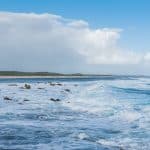The allure of Northern Ireland’s natural reserves can captivate any nature and wildlife enthusiast. With its lush, verdant landscapes, undulating hills, serene lakes, and diverse wildlife, the Emerald Isle is indeed a paradise for those who yearn to embrace the tranquillity of nature. The reserves are teeming with a varied selection of species, from majestic deer to chirpy birds, each offering a unique spectacle. For one to fully appreciate the richness of these reserves, timing your visit can make a significant difference.
Here’s a comprehensive guide to the best times of the year to explore Northern Ireland’s natural reserves, highlighting the wildlife one can expect to encounter, and the unique features each season offers.
Cela peut vous intéresser : How to plan a sustainable tourism trip to Cornwall's coastal areas?
Spring – A Time of Rejuvenation
Spring is a season of rebirth and regeneration in Northern Ireland’s natural reserves. The dreary winter gives way to blooming flowers, lush vegetation, and the arrival of migratory birds, transforming the parks into vibrant habitats.
During this season, the reserves are filled with the song of birds, as they return from their winter migration. The wetlands brim with life as thousands of birds, such as Brent Geese and Golden Plovers, flock to the region. Spring also marks the beginning of the breeding season for deer in the woodland areas, offering visitors the rare opportunity to witness these majestic creatures in their natural habitat.
A découvrir également : How to experience a day in the life of a British farmer in Yorkshire?
A notable location to visit during spring is the County Down’s Murlough National Nature Reserve. Renowned for its stunning dune system and rich birdlife, the park becomes a sanctuary for a variety of native and migratory birds, including Skylarks, Stonechats, and Meadow Pipits.
Summer – Nature in Full Splendour
Come summer, Northern Ireland’s natural reserves are a spectacle of nature at its finest. The parks are teeming with life, and the longer days mean more opportunities for wildlife spotting.
During this season, the reserves are filled with a plethora of insects, making it an ideal time for birds. Species such as Swifts, Swallows, and House Martins can be seen swooping around, feeding on the insects. The warm weather also entices a myriad of butterflies, adding a splash of colour to the landscape.
Among the parks to visit in summer, Fermanagh’s Castle Archdale Country Park stands out. Situated on the shores of Lough Erne, the park is home to Otters, Red Squirrels, and various bird species. In summer, the wildflower meadows and hedgerows of the park are a haven for butterflies and other insects.
Autumn – A Season of Change
Autumn in Northern Ireland’s parks and reserves is a season of dramatic change, marked by falling leaves and a shift in the behaviour of wildlife. This season is particularly known for the deer rut – an impressive display as males vie for the attention of females.
Many reserves in Northern Ireland offer the chance to see this fascinating spectacle, but perhaps none more so than the Crom Estate in County Fermanagh. Here, the deer rut can be heard echoing through the park, adding to the autumnal atmosphere.
Birdwatchers will also enjoy autumn, as it marks the return of migratory birds who spent their summer in the north. Keep an eye out for Redwings and Fieldfares arriving from Scandinavia and Greenland.
Winter – A Time of Survival
Winter in Northern Ireland transforms the natural reserves into mesmerising winter wonderlands. While it may seem like a challenging time to spot wildlife, this season provides some unique opportunities.
Birds are typically easier to spot against the bare trees, and winter is the best time to observe the large flocks of waders and Wildfowl that visit the Northern Ireland coast. The Lough Foyle reserve in County Londonderry, renowned as one of the best birdwatching sites in Europe, is particularly worth a visit in this season.
Winter is also a great time to see some of Northern Ireland’s marine life, with seals often spotted on the coast, and the waters around Rathlin Island hosting a variety of marine species.
In every season, Northern Ireland’s national reserves provide a stunning backdrop for viewing an array of wildlife. So, whether you’re an avid birdwatcher, a deer enthusiast or simply a lover of nature, there’s always something to see and marvel at. Each season brings its unique charm and showcases different aspects of wildlife behaviour, making every visit a distinct and unforgettable experience.
National Parks and Nature Reserves in Northern Ireland
Northern Ireland is home to a variety of national parks and nature reserves, each with its own unique charm and wildlife inhabitants. The Causeway Coastal Route, for instance, provides a stunning backdrop for birdwatching and marine life spotting. The route includes the renowned Rathlin Island, known for its bird species and marine wildlife such as seals and dolphins.
County Antrim is well known for its beautiful Glenariff Forest Park, a nature reserve laden with waterfalls, rivers, and scenic trails, offering an ideal habitat for Red Deer. Strangford Lough, the largest sea lough within the United Kingdom, is another nature reserve that hosts a variety of bird species, making it a must-visit spot for birdwatchers.
Castle Espie, a wetland reserve managed by the Wildlife and Wetlands Trust, offers a unique experience, especially during the winter, with thousands of birds migrating from the Arctic. Similarly, Killarney National Park, although it is not in Northern Ireland but in the Republic of Ireland, is worth mentioning due to its Red Deer population, one of the last remaining in Ireland.
Activities and attractions in these reserves are season-oriented, with each time of the year offering a distinct experience. Understanding the best time to visit these reserves will ensure you enjoy the full array of nature and wildlife Northern Ireland has to offer.
Conclusion: Choosing the Best Time to Visit
To summarise, the best time to visit Northern Ireland’s natural reserves largely depends on what you want to see. Spring brings the return of migratory birds and the beginning of the deer breeding season. Summer is the ideal time for birdwatching and spotting butterflies. Autumn is marked by the deer rut and the return of migratory birds from the north. Winter, albeit cold, is a fantastic time for birdwatching on the coast and spotting seals.
Food and drink options in Northern Ireland are also season-dependent, with each season offering a range of local produce and drinks. The national Trust manages several of these reserves and parks and often provide facilities like cafes and visitor centers where you can sample local produce.
Northern Ireland, with its verdant landscapes, stunning coastal route, and diverse wildlife, is indeed a paradise for nature enthusiasts. Regardless of the time of year you choose to visit, the Emerald Isle’s natural reserves promise an unforgettable experience that will leave you yearning for more. Whether you’re an avid birdwatcher, a nature lover, or simply someone seeking tranquillity away from the hustle and bustle of city life, Northern Ireland’s natural reserves await to mesmerise you with their beauty.











